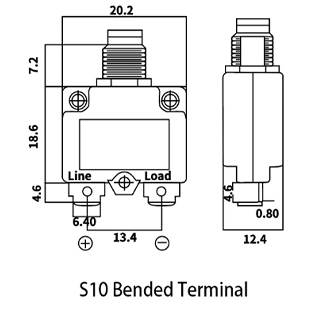Understanding Butyl Rope Caulk A Comprehensive Guide
Butyl rope caulk, often simply referred to as butyl caulk, is a versatile sealing material that has gained popularity in construction and home improvement projects. Known for its exceptional weatherproofing properties, this unique product is particularly well-suited for applications requiring a durable, flexible seal. In this article, we will delve into what butyl rope caulk is, its advantages, applications, and tips for effective use.
What is Butyl Rope Caulk?
Butyl rope caulk is a type of adhesive sealant made from butyl rubber, a synthetic rubber known for its excellent adhesion and elasticity. The material is typically supplied in a rope-like form, which makes it easy to manipulate and apply directly to various surfaces. When applied, butyl caulk maintains its flexibility over time, allowing it to expand and contract with changes in temperature and pressure without losing its sealing properties.
Advantages of Butyl Rope Caulk
One of the standout features of butyl rope caulk is its weather resistance
. The material forms a watertight seal that protects against moisture infiltration, making it ideal for preventing leaks in areas exposed to the elements. Additionally, butyl caulk is resistant to UV rays, which contributes to its longevity, as it will not degrade as quickly as some other sealants when exposed to sunlight.Another advantage is its versatility. Butyl rope caulk adheres well to a wide variety of surfaces, including metal, glass, brick, concrete, and wood. This makes it suitable for numerous applications, from roofing to windows and doors. Furthermore, its flexibility allows it to accommodate slight movements, which is vital in preventing cracks and gaps from forming over time.
Common Applications
Butyl rope caulk is widely used in both residential and commercial settings. Here are some common applications where butyl caulk shines
1. Roofing Its weather-resistant properties make it an excellent choice for sealing roof seams, flashings, and roof vents. It helps prevent leaks and prolongs the life of roofing materials.
2. Windows and Doors Applying butyl caulk around window frames and door thresholds creates a tight seal, improving energy efficiency and reducing drafts. This is particularly beneficial in maintaining indoor temperatures and lowering energy costs.
butyl rope caulk

3. HVAC Systems Butyl rope caulk can be used to seal ductwork, ensuring that air is distributed efficiently throughout a building, reducing energy wastage.
4. Gutters and Downspouts It can be applied to seal joints and connections, preventing water from leaking and causing structural damage.
Tips for Effective Use
To achieve the best results when using butyl rope caulk, keep the following tips in mind
- Surface Preparation Ensure that the surfaces you plan to seal are clean, dry, and free of any debris. Dust or moisture can hinder adhesion.
- Correct Application Roll the rope caulk into the desired shape (usually a thin rope) and press it firmly into place. Use your fingers or a tool to smooth it down for a better seal.
- Cure Time Allow adequate time for the caulk to cure. While butyl caulk typically sets quickly, it may require several days to fully cure, especially in cooler, humid conditions.
- Temperature Considerations For optimal application, use butyl caulk in dry weather conditions and moderate temperatures. Extremely cold or hot conditions can affect the adhesion and flexibility of the product.
Conclusion
Butyl rope caulk is a reliable sealing solution for various construction and DIY projects. Its exceptional adhesion, flexibility, and weather resistance make it an ideal choice for anyone looking to enhance the durability and efficiency of their structures. Whether you're sealing windows, roofs, or HVAC systems, understanding how to properly use butyl caulk can lead to long-lasting results and peace of mind. With the right techniques and applications, butyl rope caulk can prove to be an invaluable tool in your maintenance toolkit.
-
XIANGFAN Rubber Tape-Ultimate Solutions for All Your Insulation NeedsNewsJun.24,2025
-
XIANGFAN Rubber Tape-Protection for Industrial and Residential ApplicationsNewsJun.24,2025
-
XIANGFAN Rubber Tape: Superior Safety and Sealing for Demanding EnvironmentsNewsJun.24,2025
-
XIANGFAN Rubber Tape: Reliable Solutions for Every Electrical ChallengeNewsJun.24,2025
-
XIANGFAN Electrical & Industrial Tape: Powering Reliability Across IndustriesNewsJun.24,2025
-
XIANGFAN Electrical & Industrial Tape: Excellence in Every ApplicationNewsJun.24,2025
